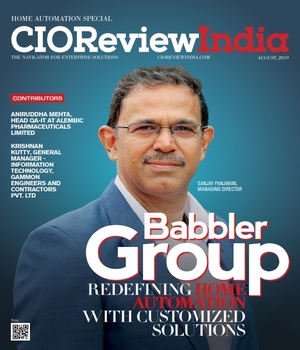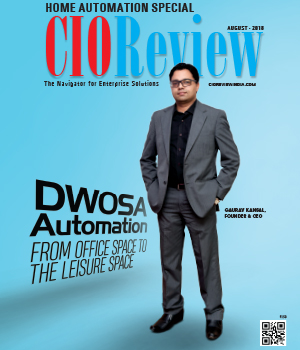
Transform and Run Information Technology like the Business
Kevin Parlette, VP-IT & CIO, Dana Holding Corporation
 Now that the automotive industry is picking up steam after the recession, it is critical to begin leveraging technology to innovate and enable business. In 2012, I was tasked to transform Information Technology for Dana Holding Corporation. The challenge was to upgrade our technology and systems, reduce risk, and strategically align to our business needs. No longer was it acceptable to run IT in a silo without regard to business challenges.
Now that the automotive industry is picking up steam after the recession, it is critical to begin leveraging technology to innovate and enable business. In 2012, I was tasked to transform Information Technology for Dana Holding Corporation. The challenge was to upgrade our technology and systems, reduce risk, and strategically align to our business needs. No longer was it acceptable to run IT in a silo without regard to business challenges.
We had a significant number of applications and a large number of ERPs, on top of outdated infrastructure that was not adequate for a Fortune 500 company, and these things needed to be addressed. After struggling for many years, we needed to address low morale of IT employees. We also needed to improve IT alignment with our business units, and operating model to develop IT governance processes to provide more cost transparency. My background was critical in this transformation as I leveraged my previous experiences in finance and in the business units to transform and run Dana’s Information Technology department so that it was similar to a business unit.
I consider transformation to be an incremental process. We wanted to build the foundational capabilities to deliver, and then strategically align Information Technology with business operational needs to enable development of innovative solutions, providing a competitive advantage for the organization.
Step-1: Build Foundational Capabilities
At Dana, we assessed our IT needs and determined there was room for improvement. We developed a plan that empowered the existing talent by leveraging their capabilities, providing them with necessary training, and placing them in the right positions. An open-door policy for all employees was instituted across all levels of management. This helped increase employee morale and performance.
We also aligned the IT organization to the current corporate organization and operating model by embedding Information Technology teams within our four business units—effectively creating a matrix model of support across the organization’s businesses, regions, and functions.
With limited resources and budget, we needed to find a way to improve our project intake, supply/demand, and delivery processes. By including the businesses upfront in the process, and managing expectations in line with our resources, we were able to align deliverables and priorities. Our ability to deliver to expectations has been greatly improved.
Information Technology had also lacked the cost visibility typically expected from our plants and business units. I empowered each of the business IT leaders to be accountable for their budgets. We also developed a budget tool that provides allocation and cost transparency globally to all stakeholders with complete spend details.
Step-2: Strategic Alignment between Business and Information Technology
Our unique approach of conducting a comprehensive risk analysis that was tied to business needs’ but not solely on IT infrastructure, helped business stakeholders understand the risks in terms they understand.
Example: Risk was evaluated and assessed to understand
• Risk to manufacturing product
• Risk to shipping product
• Risk to selling product
• Risk to closing the books
We developed a 12-step strategy process leveraging industry reference models, leading practices, and emerging technologies. We were thus able to tailor a strategic plan and process that fits Dana’s needs. A three-year roadmap was developed for all businesses and functions to ensure all investments are tied to business strategies, risks, and priorities. These roadmaps were used to assess supply and demand of resources as well as input during our budgeting process. It was important to ensure that our IT strategies and roadmaps were continuously updated based on changing business strategies and goals.
“Business and Information Technology personnel now work in harmony to deliver successful projects with the business units leading the programs by providing process expertise”
Step-3: Information Technology as Business Enabler
Information Technology personnel integrated within each business was able to gain industry expertise and provide cost-effective and innovative technical solutions that solved business needs. No longer was IT providing solutions to the business without a concrete need. Business and Information Technology personnel now work in harmony to deliver successful projects with the business units leading the programs by providing process expertise, and Information Technology providing technical expertise. This synergy and accountability is helping us deliver projects successfully.
In conclusion, we were able to transform Information Technology from “Utility” to “Business Enabler” successfully with strong business collaboration, improved governance, and motivated employees. Our approach was based on the culture of our company with the understanding that there is no “right way”, rather it is a matter of choosing the “best way” given the needs and culture of the organization and IT’s capabilities.
CIO Viewpoint
Why Foolproof Facial Recognition Is Key Against...
By Joseph Sudheer Thumma, Global CEO & MD, Magellanic Cloud
National Technology Day 2025: Powering Progress...
By CIOTech Outlook Team
Aligning IT Roadmap with Business Objectives: A...
By Subhash singh Punjabi, CISO & Head Enterprise Architecture, Deepak Fertilisers & Petrochemicals Corporation Ltd
CXO Insights
Home Owners Can Look Forward To Futuristic Home...
By Avnish Mehta, Director - Digital Transformation at CollaberaInc
Empowering Mobile Network Operators With...
By Christos Karmis, President & CEO, Mobilitie
Smart Homes: Changing The Way We Live








